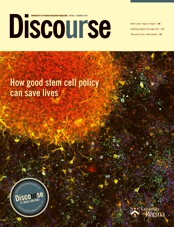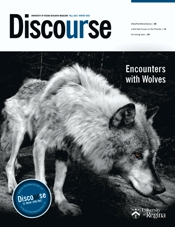A new online resource helps child services workers support the mental health and well-being of vulnerable children and adolescents. (Istock)

When COVID-19 first struck, child therapy worker Alex Paiva and her colleagues at Child and Family Services of Western Manitoba felt like the rug had been pulled out from under them.
Committed to providing evidence-based support for children and youth who have experienced abuse or trauma, the team didn’t know where to turn for information on how to continue carrying out their work under the new restrictions brought on by the pandemic. On top of its health risks, COVID-19 increased the risks of separation, isolation, and additional trauma for children, youth, and families involved with the child welfare system.
“It was just crazy,” recalls Paiva, who is based in Brandon. “We wondered, what does this mean for us as individuals, for our workplace, and for the youth that we work with? There were a lot of unknowns and a lot of uncertainty. Things were changing day by day, minute by minute, especially at the onset.”

INFORMATION GAP
It was precisely this information gap that the University of Regina’s Nathalie Reid and Lise Milne sought to fill when they applied for and secured grant funding to rapidly scan and synthesize the evidence on child services best practices during a pandemic. Recognizing that professionals with heavy caseloads were already busy trying to figure out how to pivot to new ways of working, the pair wanted to quickly get the latest evidence out of the published and grey literature (materials and research produced by organizations outside of traditional commercial or academic publishing channels) and into the hands of people working with some of society’s most vulnerable members.
“To have had to add this extra layer for them would have been really, really challenging,” says Milne, an assistant professor in the U of R’s Faculty of Social Work who herself worked in child welfare for 15 years. “Our ultimate goal was to make it so they could have a single point of access to a number of different topic areas that were relevant to their work.”
With funding from the Saskatchewan Health Research Foundation (SHRF) and the Canadian Institutes of Health Research (CIHR), Reid, Milne, and their team have built and populated the Digital Connections Hub, a website rich with resources designed to help Paiva and other child-services professionals across the three prairie provinces do the best they can for their clients.
The site is part of the Child Trauma Research Centre (CTRC), which opened at the U of R, with Reid as director, on March 10, days before Saskatchewan went into COVID lockdown. Reid and Milne believe the site is the only resource of its kind specific to child trauma and COVID-19.

DIGITAL CONNECTIONS HUB
After consulting with more than 70 stakeholders involved in child welfare and health, the CTRC team conducted a “socio-ecological scan” to identify factors contributing to childhood trauma. Reid explains that childhood trauma goes beyond what most people first think of – abuse or neglect – to include other determinants such as economic, climate, and food security. Four key themes emerged in the literature: mental health issues among children, youth, caregivers, and service providers; substance use among youth and caregivers; child protection issues; and effective communication strategies.
They distilled 300 of the most relevant sources into eye-catching, readable information briefs and workstation-ready posters on 40 topics, most of which have already been translated into French. The project was an exercise in rapid knowledge mobilization.
The team started scanning the literature in mid-May and had soft-launched the Digital Connections Hub by September.
Throughout the editorial process, the Hub’s development team always kept the knowledge users in mind. The goal, says Reid, was condensing all of the evidence into practical tools. “We wanted it to be supportive of the service providers and end users who don’t have reams and reams of time,” says Reid. “Here are the practical suggestions or possible responses; here are some actual scripts on how to speak to children about COVID-19. So, not just saying it’s important to do it, but also, here are some suggestions on how to do it.”
Mission accomplished, according to Paiva.
“The Hub doesn't just provide information or technical literature reviews. It's actually providing recommendations and practical tools. As a frontline worker, that's what you're always dependent on.”
“In this extraordinary time of COVID-19, it is very important to be able to understand the mental health impacts related to child welfare services for clients and staff so that future decisions can be based on evidence-based research.”
Saskatchewan’s assistant deputy minister of child and family programs, Natalie Huber, agrees that the Hub is making a difference – especially right now.
"In this extraordinary time of COVID-19, it is very important to be able to understand the mental health impacts related to child welfare services for clients and staff so that future decisions can be based on evidence-based research," says Huber.
But while the researchers started out thinking their audience was professionals and caregivers directly working in child welfare, they quickly realized the information they were collecting would be useful to the entire "child-serving" sector, which includes education, mental health, community support, outpatient care, as well as recreation and community organizations.
“As we were conducting our scan, we were coming across situations where we were trying to think of who the knowledge user would be for a particular brief or bundle of information,” says Reid, a former high school teacher. “And we were saying, well, it could be social workers, but you know what, this really is applicable to teachers and to nurses, too.”
A ONE-STOP SHOP
With the second wave of the pandemic now a reality, it’s clear that the current crop of resources on the Digital Connections Hub will stay relevant for the foreseeable future – a future that will likely include more pandemics and other global crises. Milne, Reid, and their CTRC team are already looking ahead to ways they can bolster the site’s content. Reid says the team plans to add resources related to other topics, such as education in times of crisis, or mental health in rural and remote Indigenous communities. While the Hub’s resources are currently targeted at professionals and caregivers, over time they want to add information that is geared specifically toward children and youth.
“My vision for the hub is that it will grow to have other layers,” says Reid. “Some will be COVID-19 risk responses in terms of childhood well-being. There will be an education section with resources and knowledge mobilization products for different projects, so this really becomes a hub for child trauma research.”
BUILDING AWARENESS AND KNOWLEDGE
Milne stops shy of labeling the Digital Connections Hub a silver lining to COVID-19. Still, after the worst of the health crisis is over, she says, they may look back and find the team’s work “improved our services for certain populations, and really highlighted some of the needs that exist.” She points specifically to the need to improve access to virtual supports such as telehealth for people living in rural and remote communities and for families who can’t afford Internet and computers.
And beyond the huge benefits from providing hands-on, how-to resources, the information the CTRC is sharing through the Digital Connections Hub is increasing awareness and knowledge of trauma among people working in the child welfare sector.
“Part of the process of being trauma informed is recognizing the multiple impacts that trauma can have on families.

"Just by virtue of us spreading information about how multiple experiences of trauma, adverse childhood experiences, and this pandemic can influence families, we are helping our service providers become more trauma informed, and that, in and of itself, is really important,” says Milne.
Visit the Digital Connections Hub at: www.childtraumaresearch.ca.












